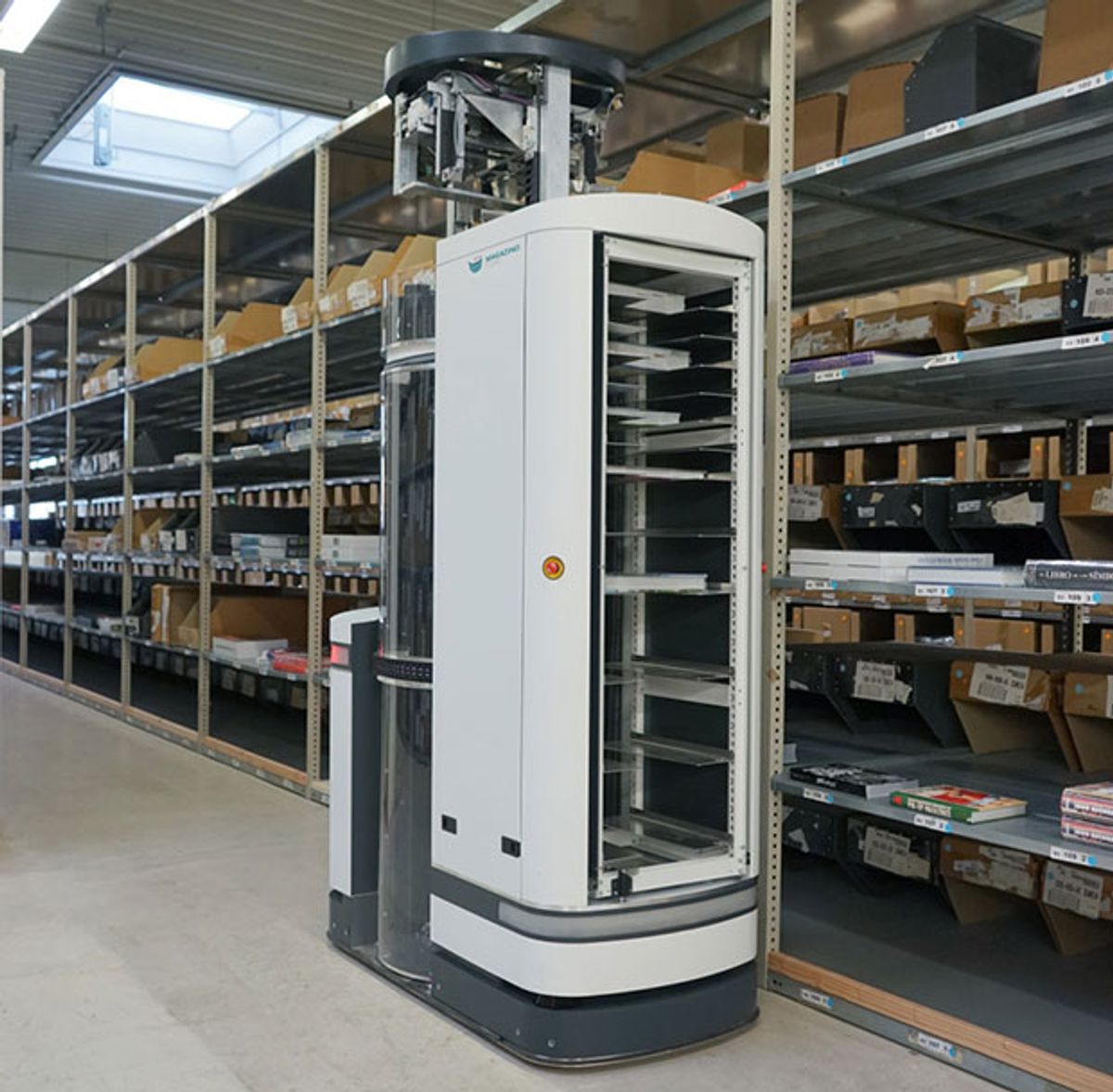Companies like Clearpath, Fetch, and Locus Robotics are doing some amazing work in order fulfillment and other warehouse tasks by developing mobile platforms that can autonomously and intelligently ferry items between locations. We don’t want to minimize how much of a challenge this is, but at the same time, it’s only half of the order fulfillment problem (and not the most difficult half). The hard part is getting those robots to pick items from shelves, and apparently it’s really hard: Amazon (whose warehouse robots are capable of tranporting items but not picking them) is holding its second Picking Challenge at RoboCup this year, and even with teams of researchers all collaborating on picking tasks with very expensive robots, results have been good but not inspiring.
German startup Magazino is another company trying to solve both problems. It has begun deploying a mobile warehouse robot called Toru designed to not only transport items but also pick them (some of them, anyway) directly off of shelves. They haven’t completely solved the problem of humans, but it’s a step in the right direction.
Magazino, which is based in Munich, has decided to take an approach that often works in robotics: reducing the complexity of the problem as much as possible to the point where it becomes something that’s realistic to solve. Acknowledging that picking random items is just too difficult for a commercial system at this point, Magazino’s Toru robot only works with things that are rectangles of a given size, like books and boxes. This sounds restrictive, but you can imagine how much of (say) your average fulfillment warehouse consists of books and boxes of a size that Toru can handle, and you’re looking at a pretty significant percentage of robot-pickable stuff.
While this is certainly an impressive take on the picking problem, we’re quite skeptical of Magazino’s claim that “the abilities of Toru are similar to those of humans,” even in the specific context that it’s working in. For example, at 0:30 in the above video, a couple of those stacks of books on the right look like they come with pamphlets. Depending on the frictional properties of the books and pamphlets, pulling one pair out might drag the pamphlet below along with it, and I’m wondering if the robot would even be able to tell, much less deal with the problem, whereas it would be effortless for a human. It’s little things like this that make robotic picking so challenging, even if you’ve tried to minimize as many variables as possible.

The other thing worth mentioning is that Toru looks very complicated, and I imagine that it’s quite expensive. It’s certainly no faster than a human at a typical picking tasks, and is probably slower. It’s likely less error prone than a human in some ways, and more error prone in others. Magazino says that they’ve sold five of the robots so far, but my concern would be that the return on investment might make marketing the robot a challenge. This has always been a problem for robotics: humans a really good at stuff, and for the most part, really cheap.
Magazino is also working on a slightly different version of Toru, called Toru Flex, which includes a robot arm intended to pick irregularly shaped objects. Magazino says that Toru Flex is “in development, coming 2017,” which seems very optimistic, but we’re definitely looking forward to seeing more companies begin to enter the commercial picking space.
[ Magazino ] via [ Tech Review ]
Evan Ackerman is a senior editor at IEEE Spectrum. Since 2007, he has written over 6,000 articles on robotics and technology. He has a degree in Martian geology and is excellent at playing bagpipes.



